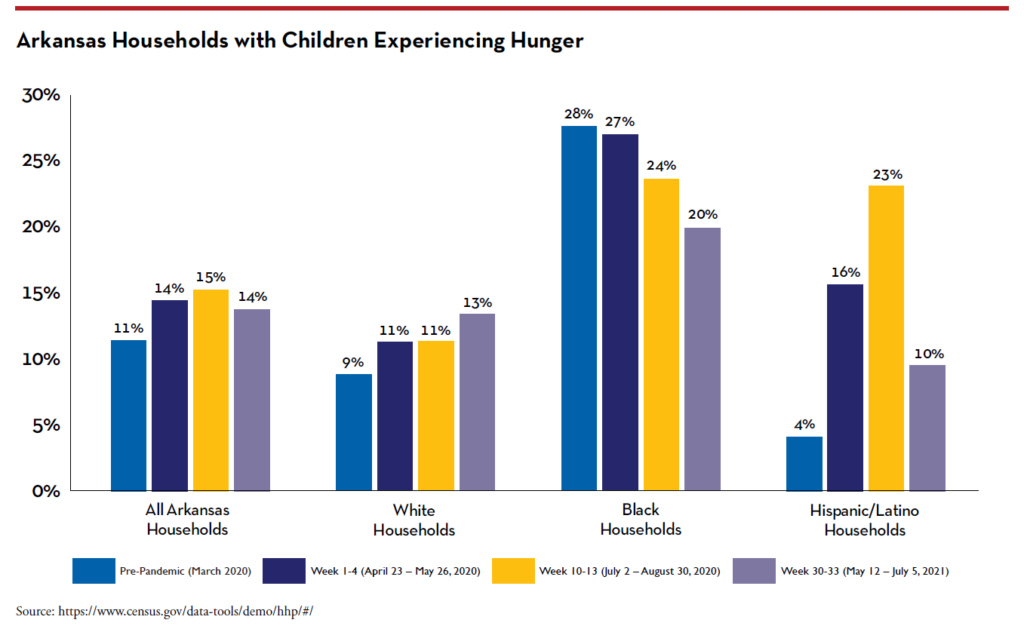The State of Hunger in Arkansas
Agriculture has played a large role in the history of Arkansas, but a surprisingly large number of Arkansans continue to suffer from hunger and food insecurity.
The COVID-19 pandemic exacerbated food insecurity for Arkansans. Pre-pandemic, 11% of all Arkansas’s families, or roughly 106,000 families with children suffered food insufficiency. That means that they sometimes or often did not have enough food to eat. During the height of the pandemic in the summer of 2020, that figure rose to 15% of all Arkansas’s families with children. And Arkansas’s Black and Hispanic/Latino families experienced hunger at disproportionately higher rates (24% and 23% respectively). Although it appears that food insufficiency has decreased overall, it is not clear how many Arkansans are still suffering from food insufficiency because the pandemic made it difficult to track this data.
Helping Kids Eat and Be Healthy
There are a variety of programs available to lessen the burdens of hunger and food insecurity for families. The Supplemental Nutrition Assistance Program (SNAP) is the nation’s largest anti-hunger program. As of October 2021, nearly 160,000 households and more than 324,000 individuals in Arkansas were receiving SNAP benefits. Also, local organizations and statewide hunger agencies have worked together to meet the needs of hungry individuals more effectively, increasing the availability school breakfast, afterschool and summer feeding programs, and food distribution.


You must be logged in to post a comment.